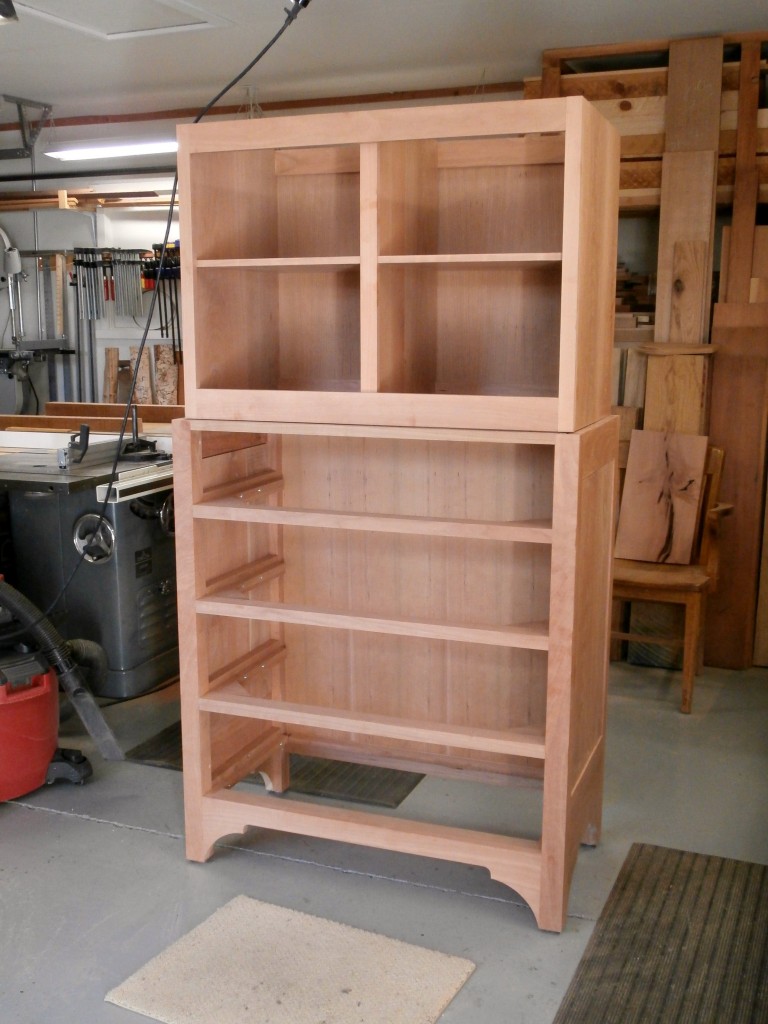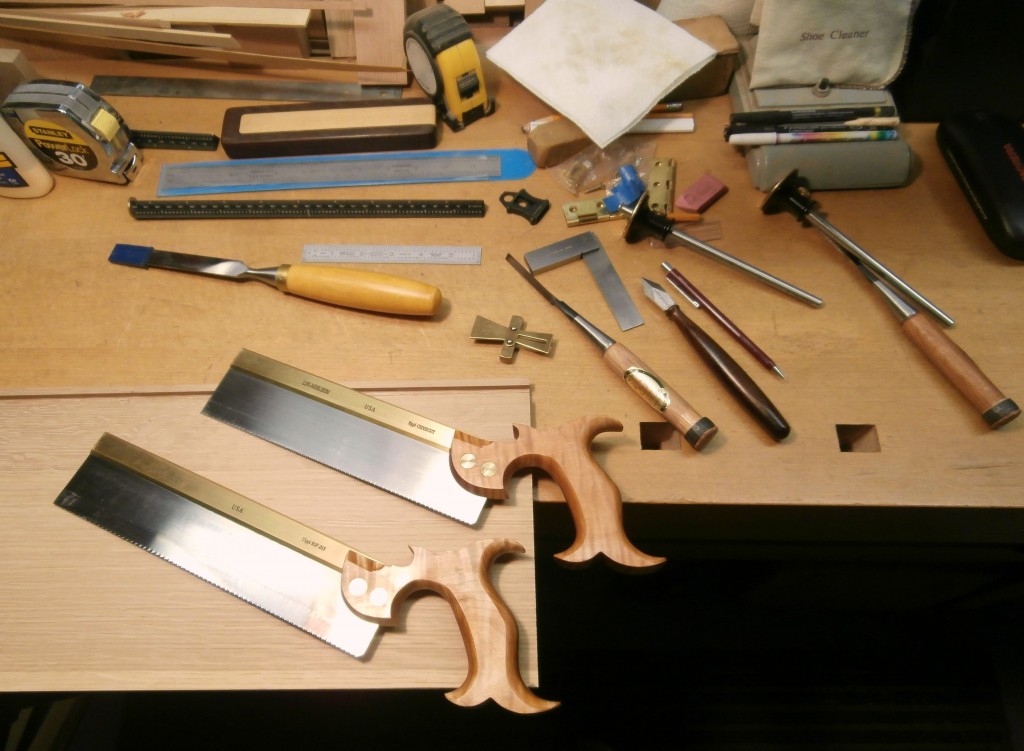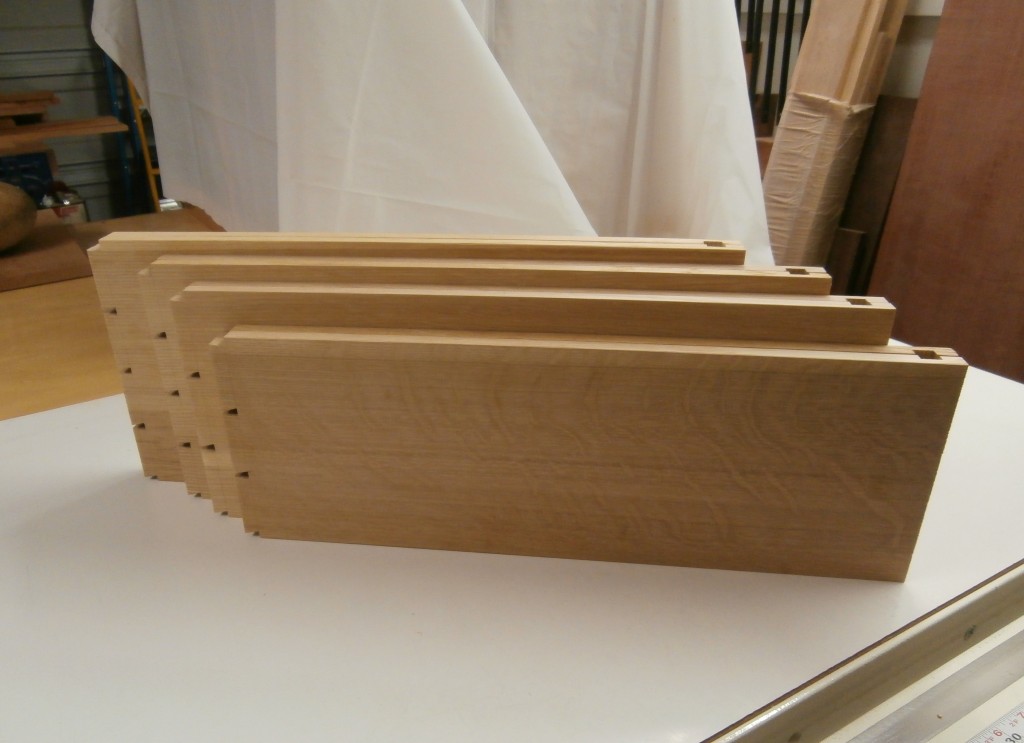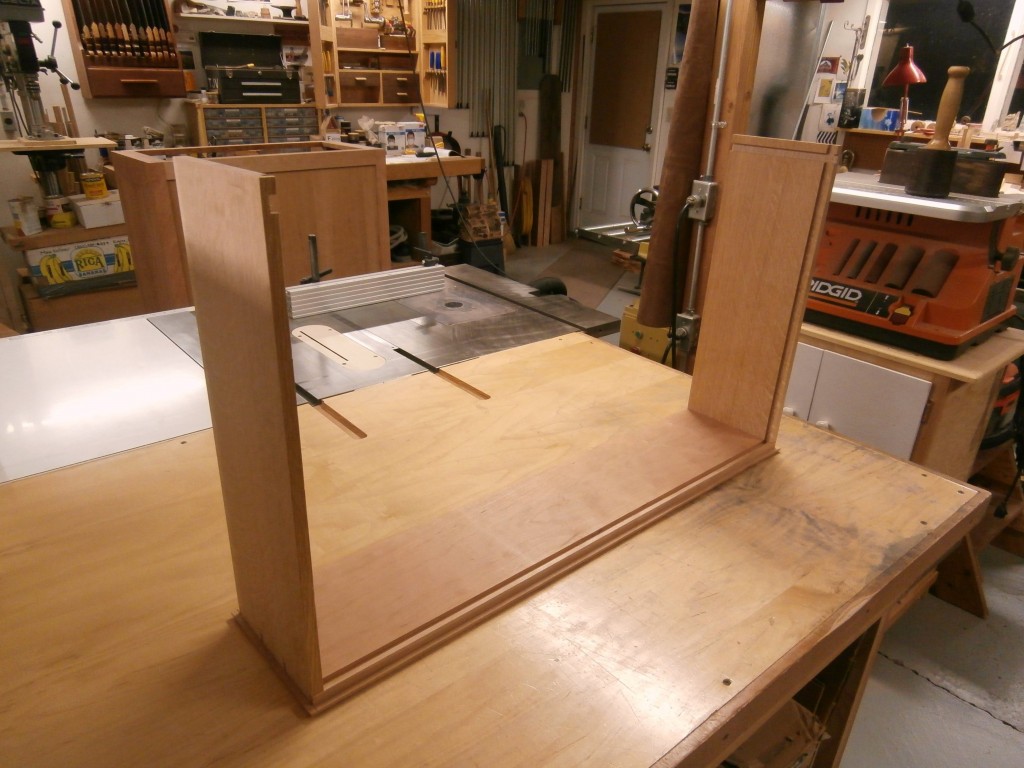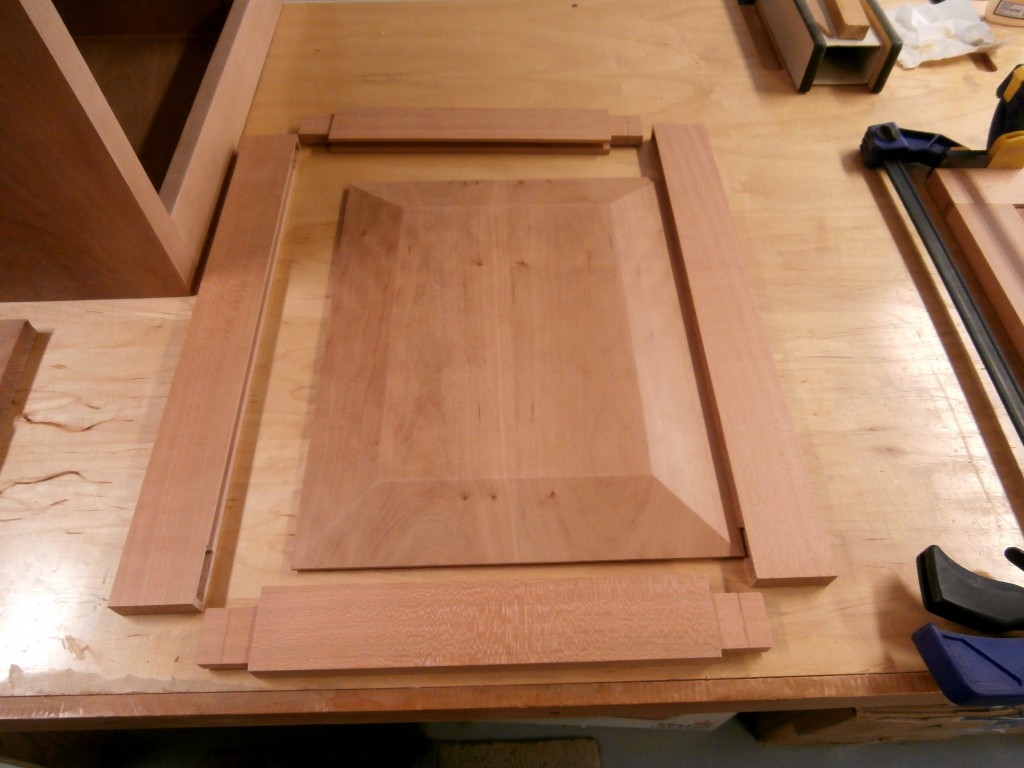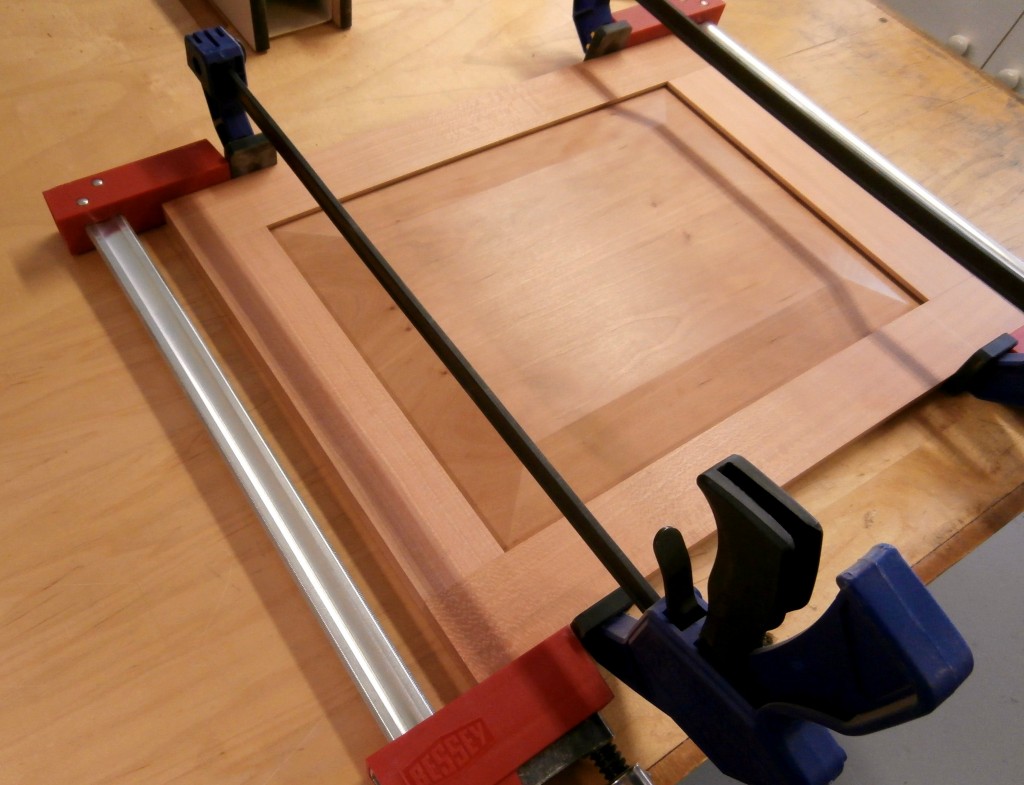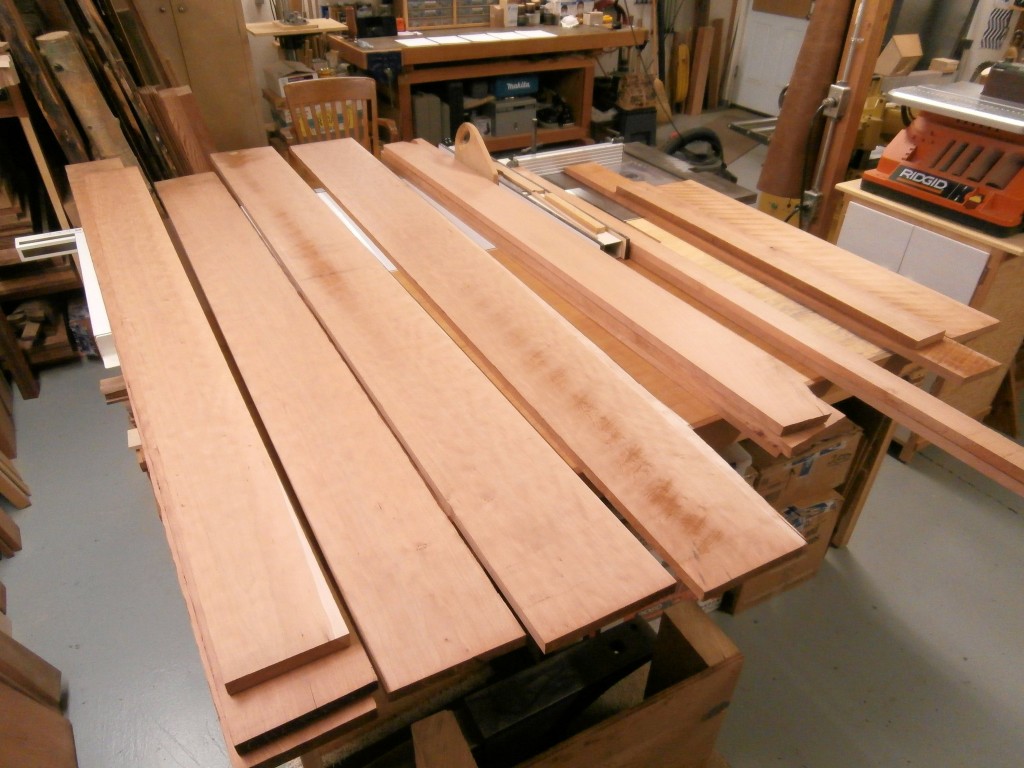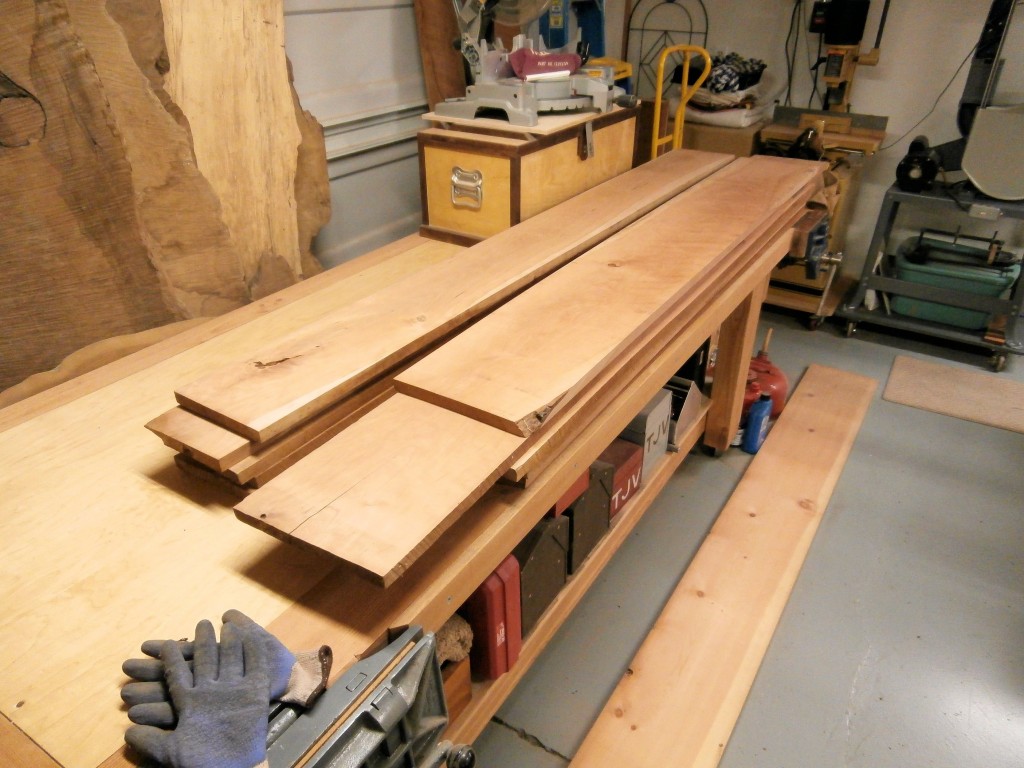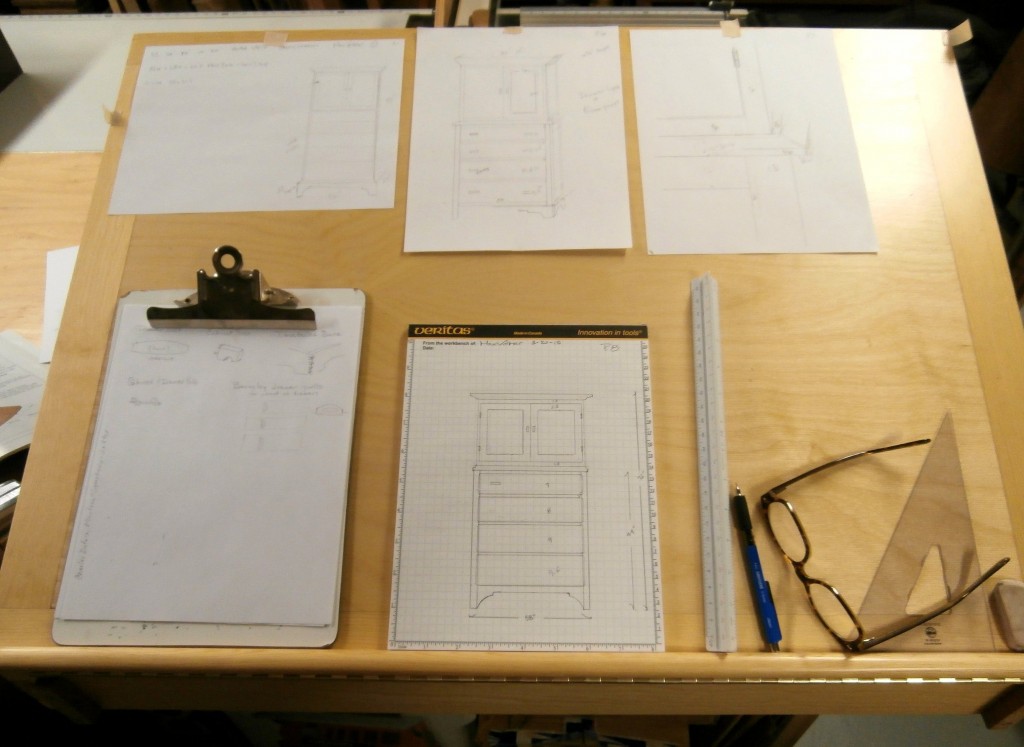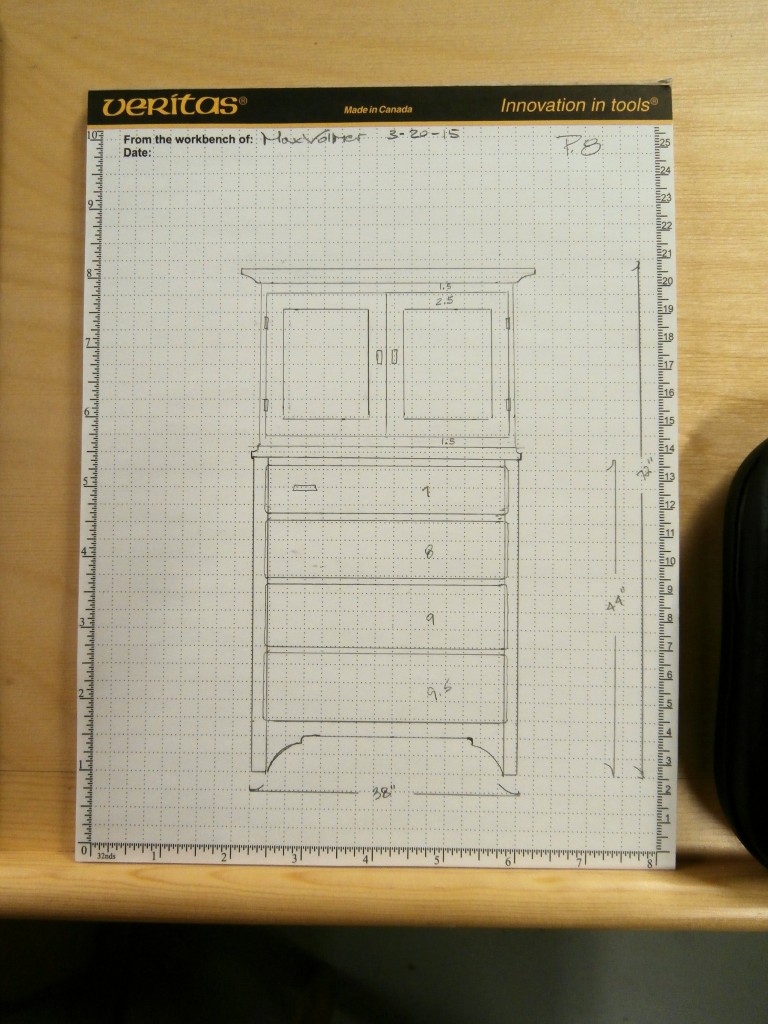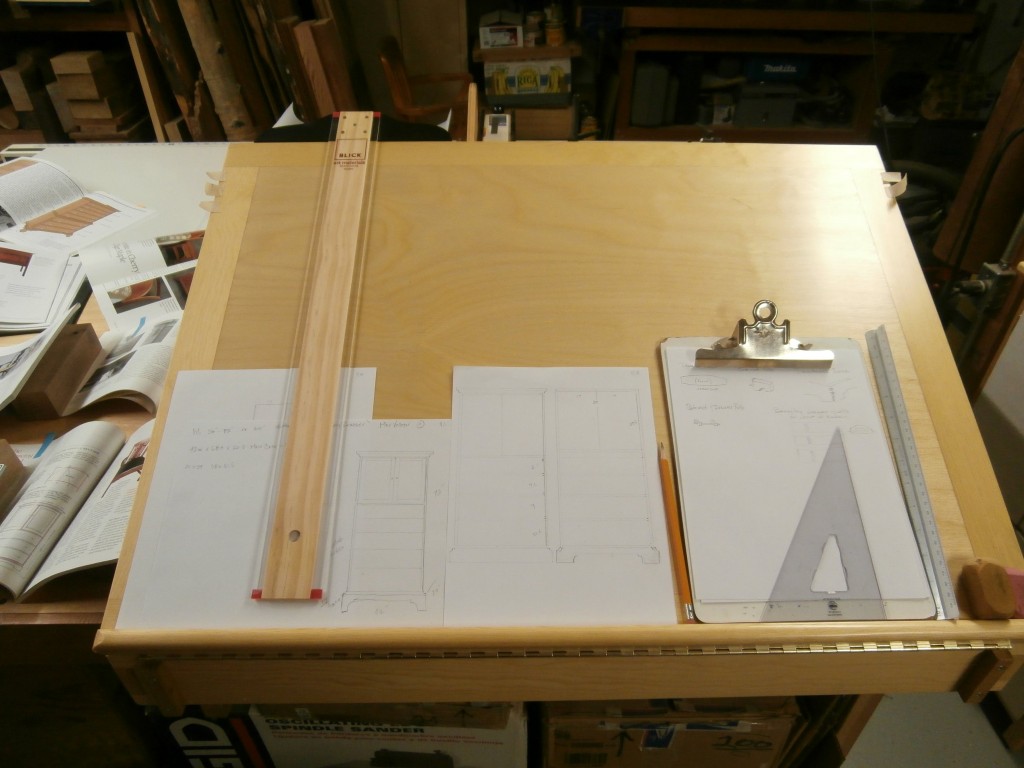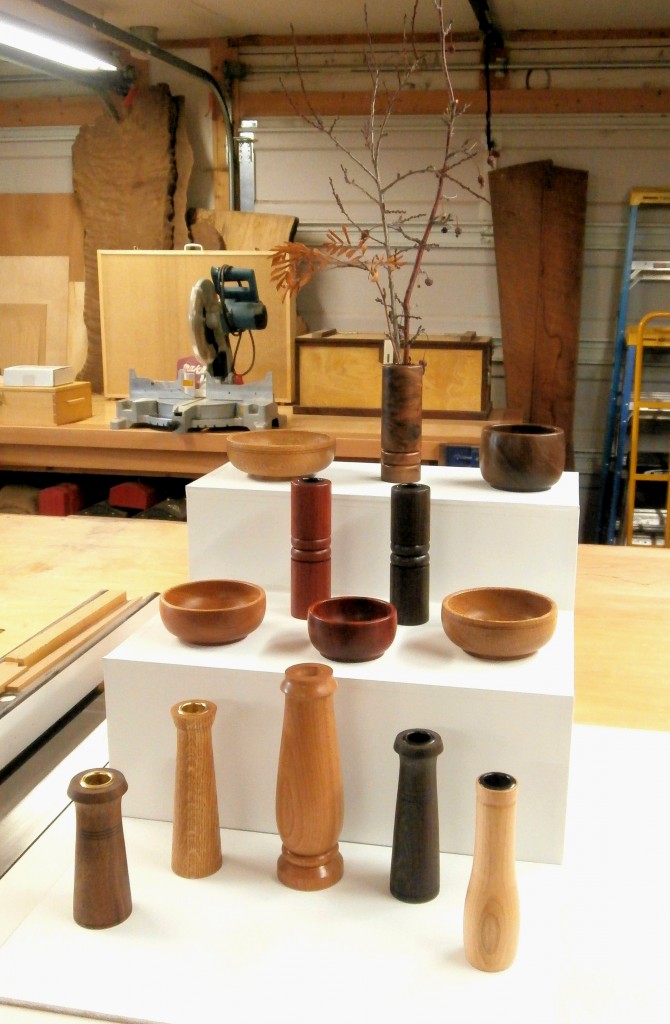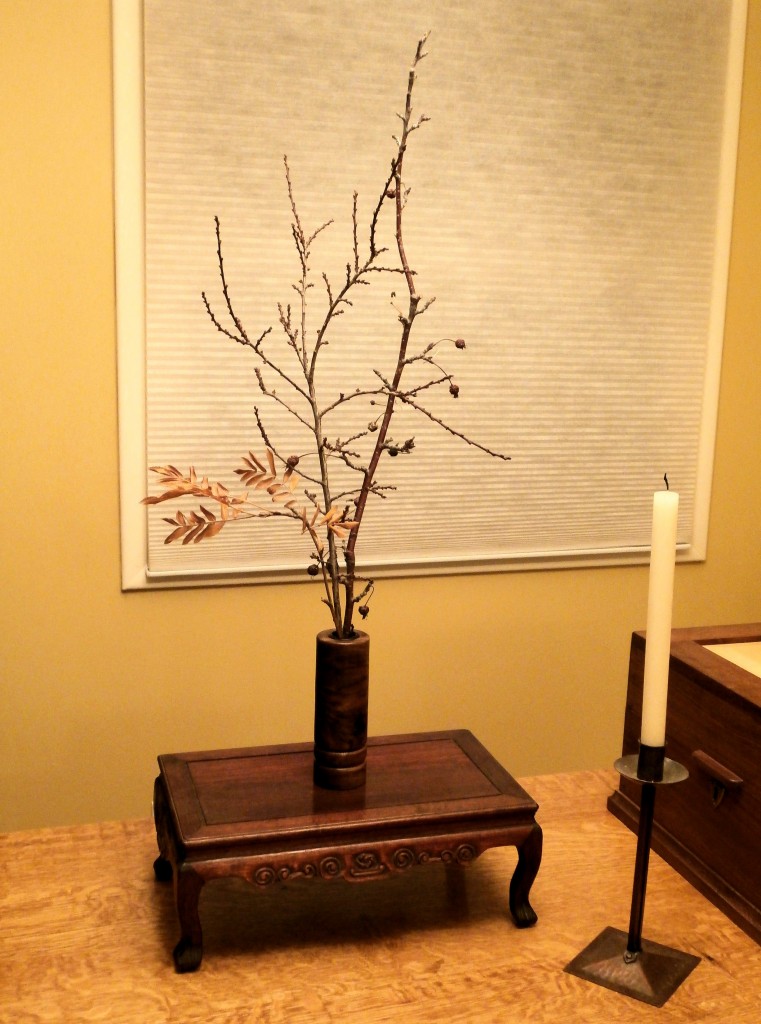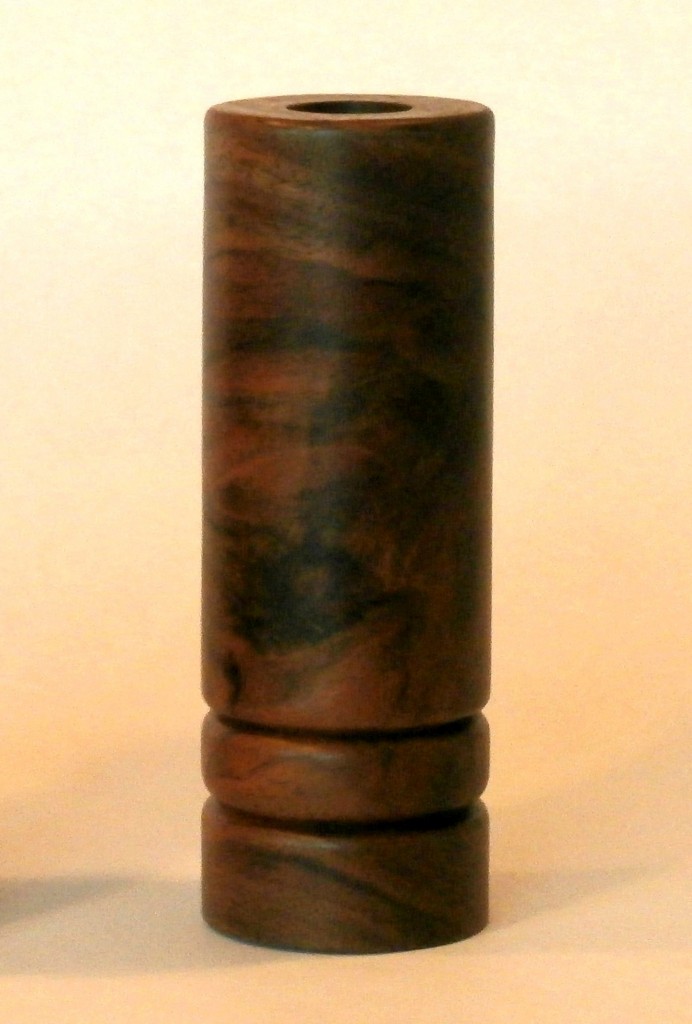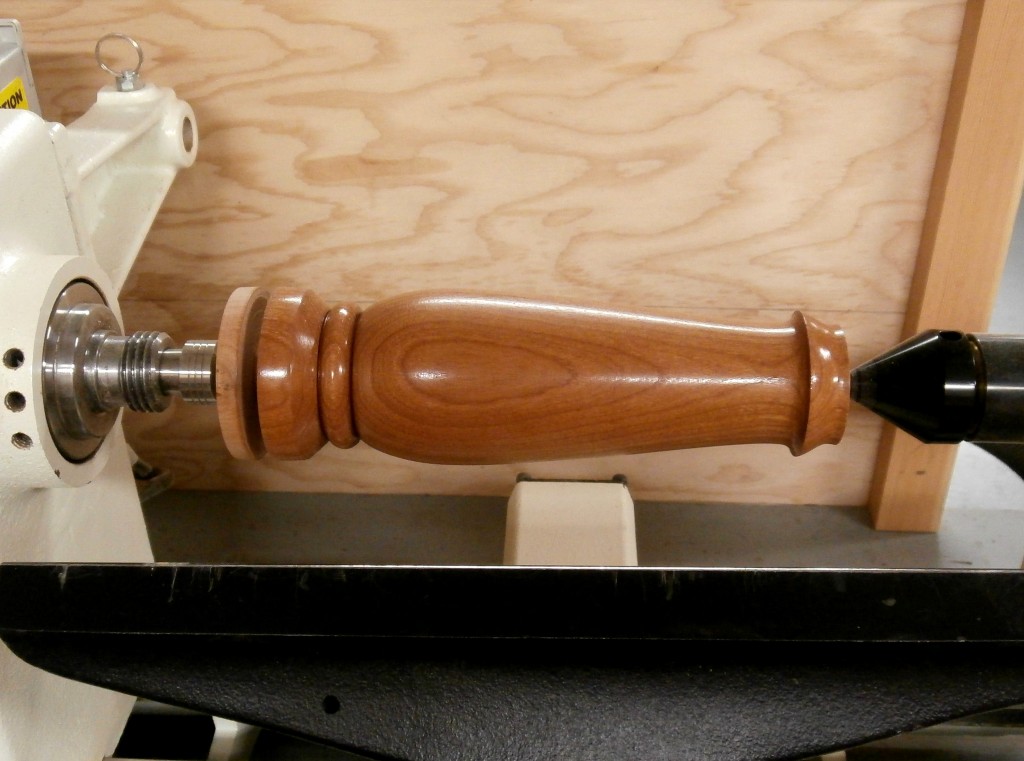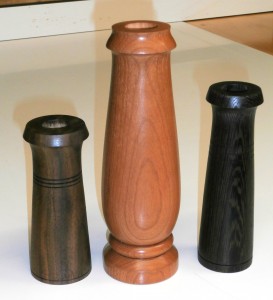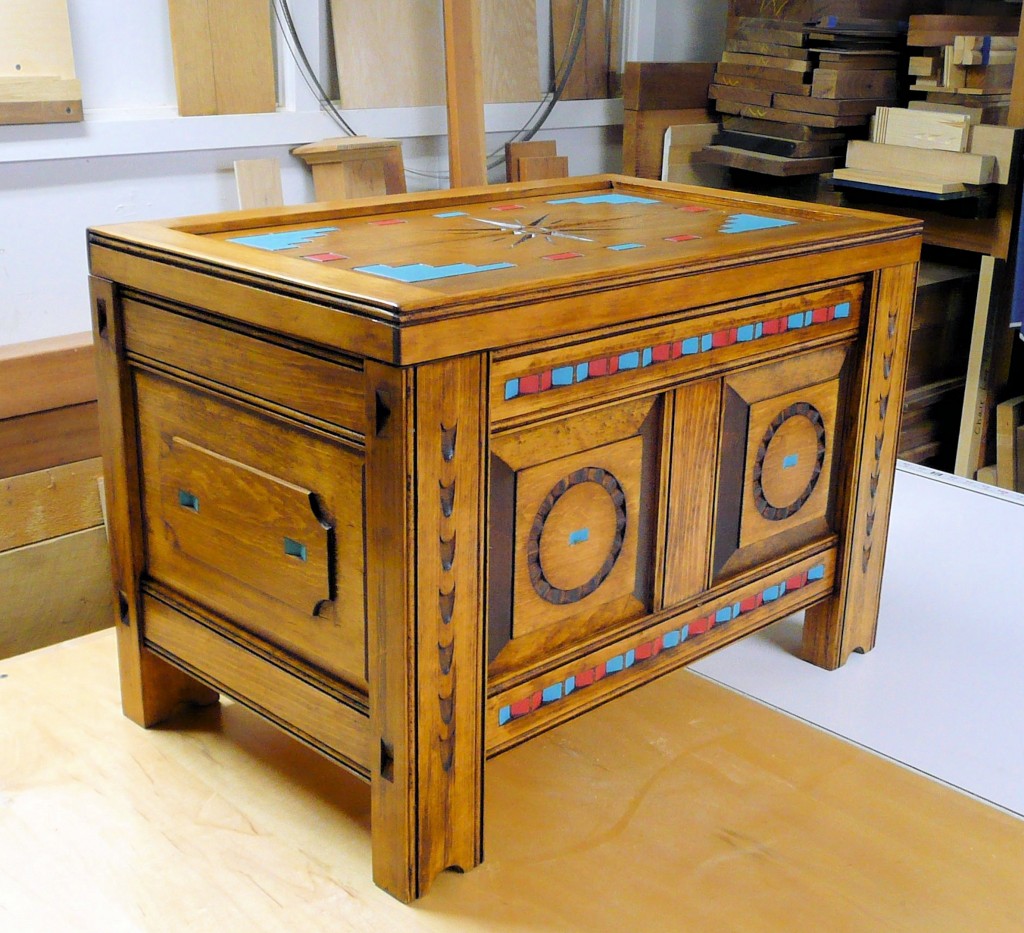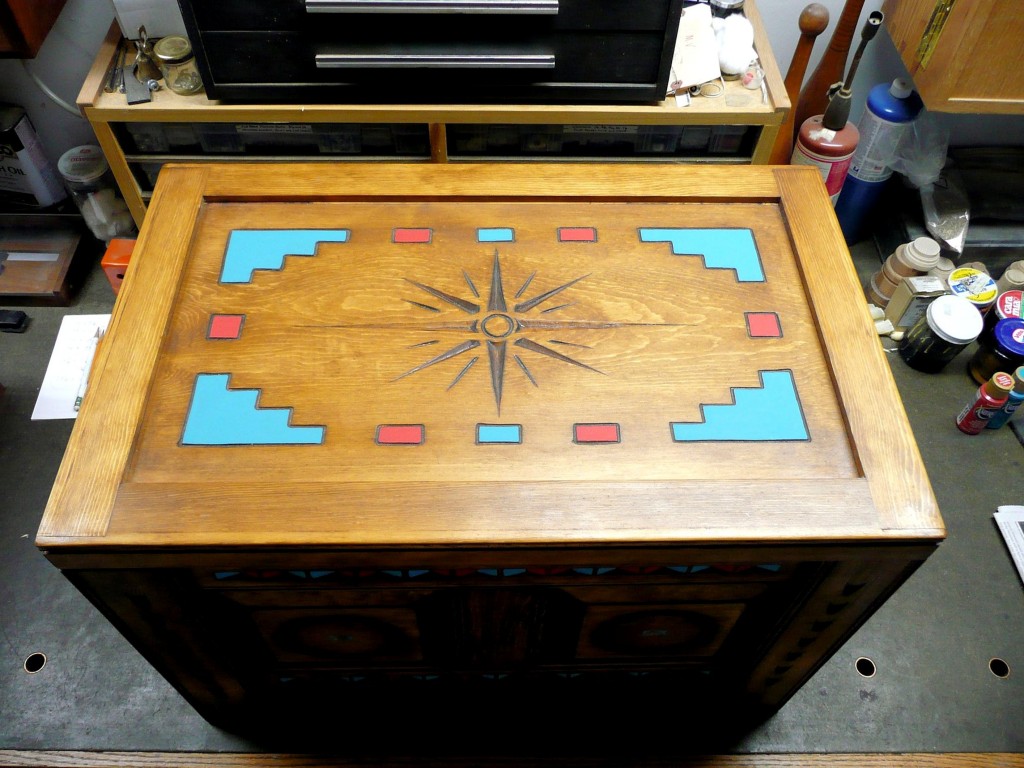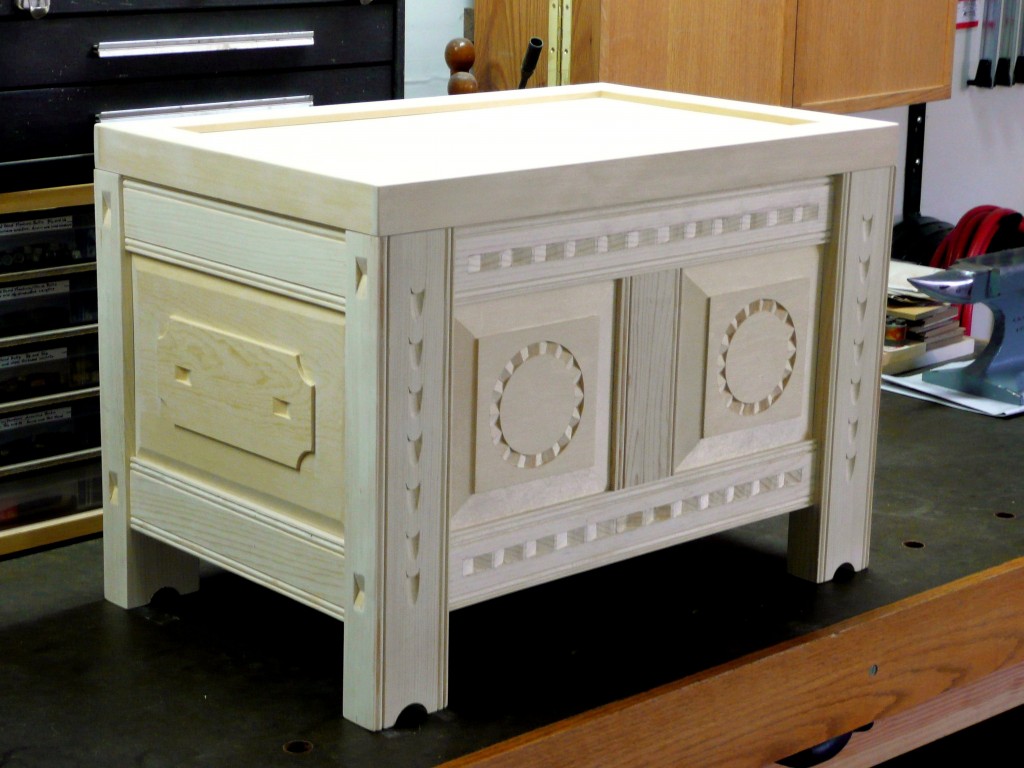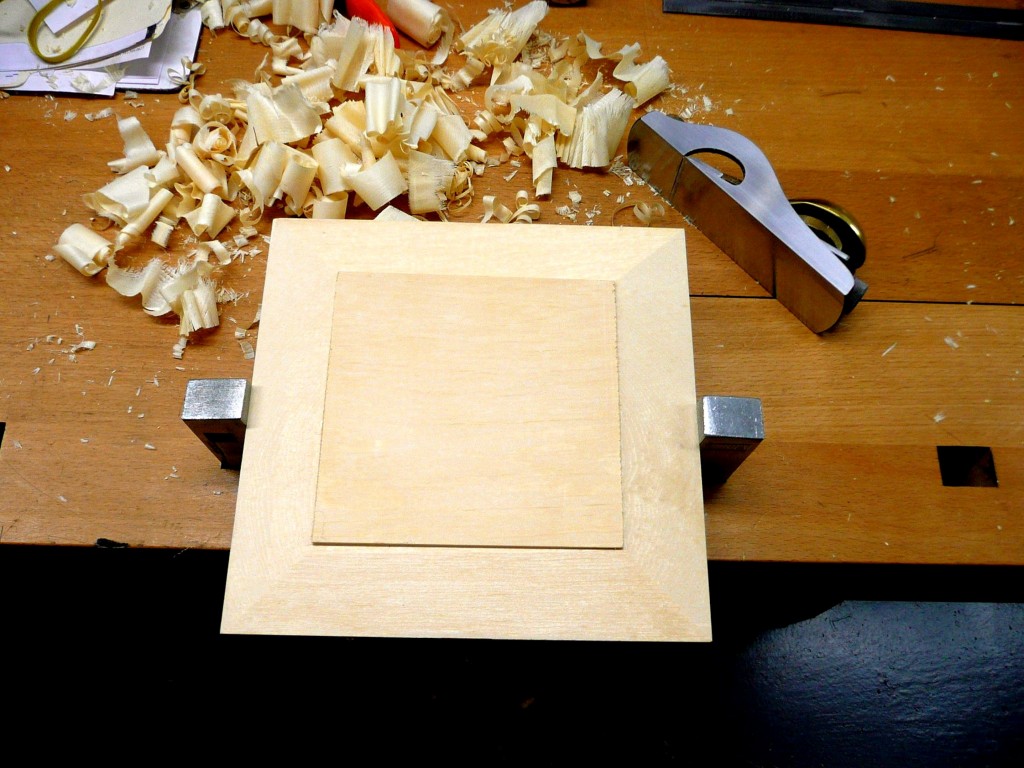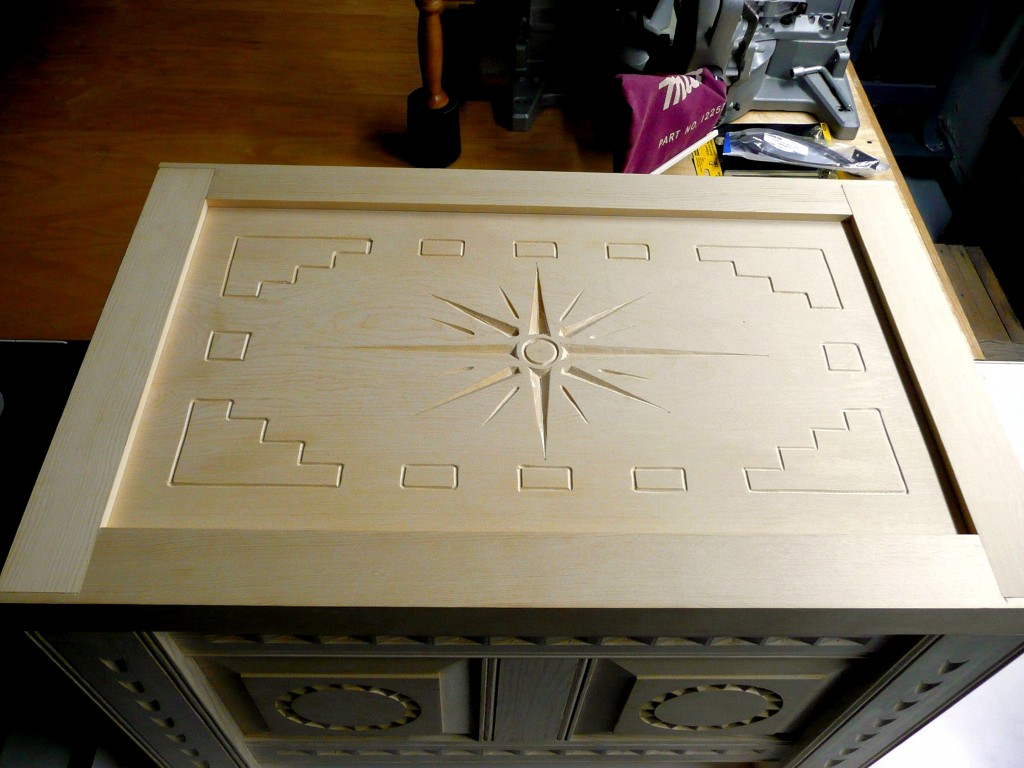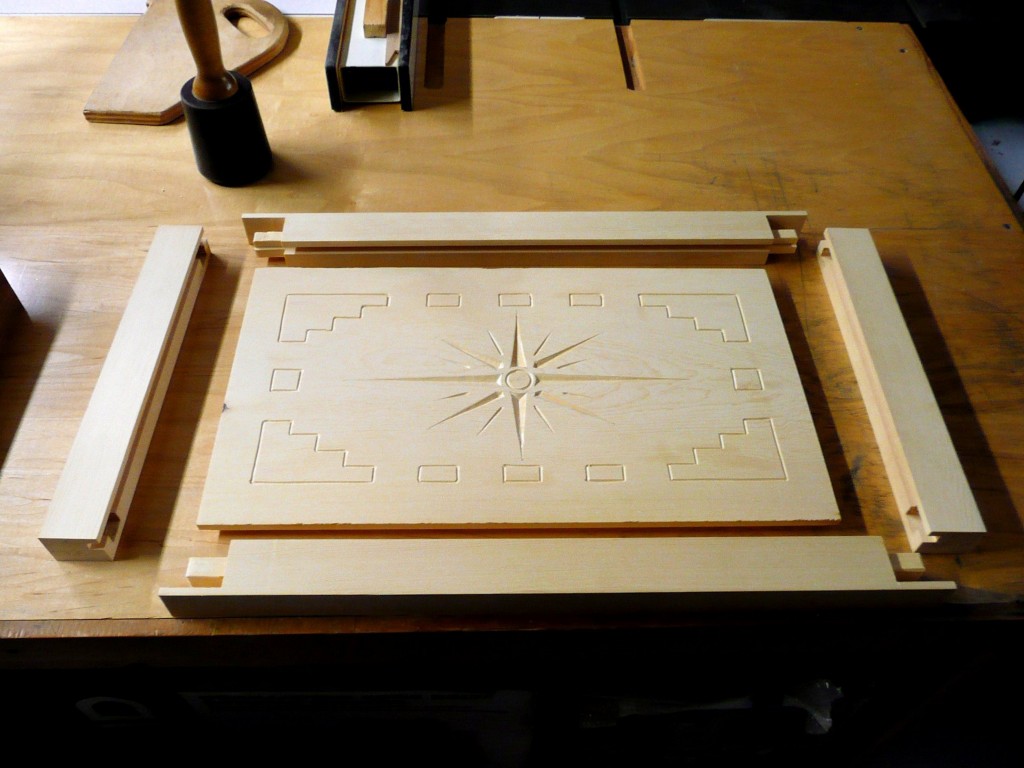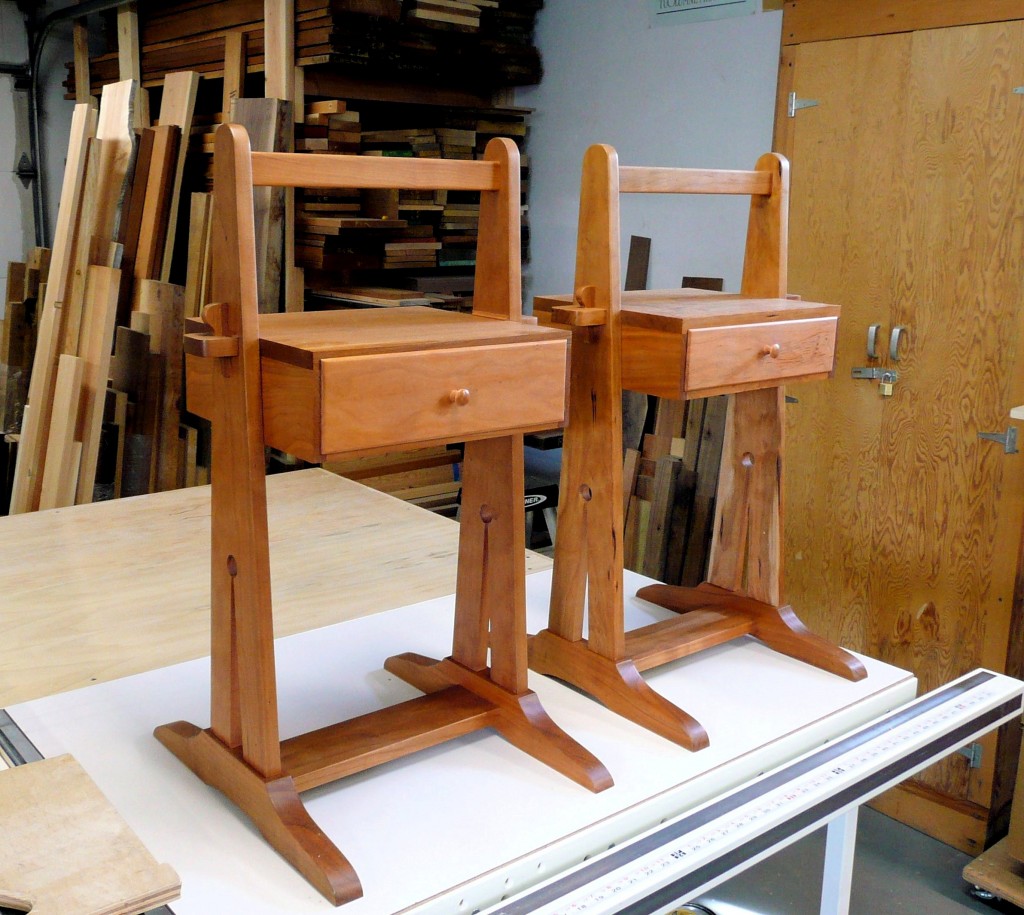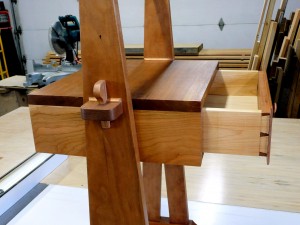This is where the basic frame work of the dresser stood on April 27. Since then I have fabricated the raised panel doors for the upper section, the drawer fronts and sides, and drawer backs and bottoms for the lower section. I am gluing up the drawers today and hope to mount the hinged panel doors for the upper case as well. (Click on any image to enlarge)
These are most, but not all, of the tools required for marking and cutting the hand-cut, half-blind dovetails that are used to join the drawer sides to the drawer fronts.
These are the four pairs of quarter-sawn white oak drawer sides for the four, graduated size drawers. The dovetails are hand-cut, the rabbets and the dadoes are cut on the table saw for the drawer bottoms and drawer backs.
These are the four cherry drawer fronts with all dovetails cut to mate with the drawer sides, and the dadoes for the drawer bottoms are cut as well.
This is how a drawer front and drawer sides come together. Note that the dadoes on both the drawer sides and drawer front line up to accommodate the drawer bottom.
The two pictures above show one of the raised panel doors for the upper section before assembly, and then the pieces glued and clamped in place. The frame pieces are glued together, but the panel floats free in dadoes that run all the way around the inside of the frame. This is so the wide, flat-sawn panel boards can expand or contract with changes in ambient humidity without stressing or cracking the frame. The door frame pieces are cut from quarter-sawn cherry and are joined together with mortise and tenon joints. The door panel is made up of two “book-matched” cherry boards arranged vertically and edge glued before the beveled edges are crafted.

